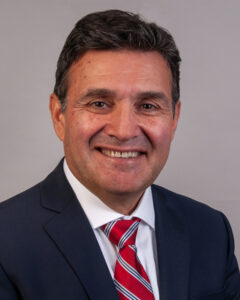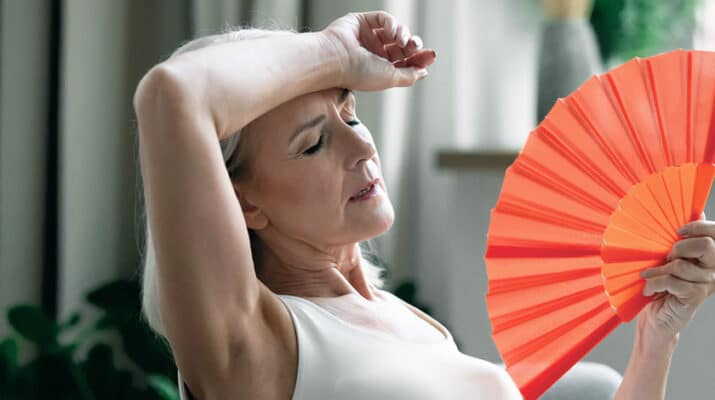By Barbara Pierce

Women tend to greet menopause with mixed emotions. Some of us are nervous about what we‘re going through. To be sure, menopause is unlike anything we‘ve ever gone through. Some of us will breeze through it with no trouble, relieved not to worry about periods or getting pregnant. For others, the transition brings a horde of unpleasant symptoms.
“Menopause is a natural transition,” said physician Samuel Badalian, chairman of obstetrics and gynecology at Bassett Healthcare Network and professor of obstetrics and gynecology at Columbia University Vagelos College of Physicians and Surgeons. “It’s a normal event in the life of every woman.”
Badalian shares valuable information all women should know:
1. When does menopause usually begin?
The average age menopause begins is around 51½. If you haven’t had a period for one year, you’re in menopause, said Badalian. For some women, it starts in their 40s, or even late 30s.
There are three stages:
• Perimenopause is when your body is making the transition to menopause. Your periods become irregular. Your level of estrogen — the main female hormone in your body —rises and falls unevenly. Your menstrual cycles may lengthen or shorten. You may also experience menopause-like symptoms, such as hot flashes, sleep problems and vaginal dryness.
During this stage, it’s still possible to get pregnant. Don’t give up on your birth control yet.
The average length of perimenopause is about four years. For some, it may only be a few months; for others, it could be even longer.
When you‘ve gone more than 12 months without having a period, then you’re in menopause.
• Postmenopause is the time after you haven’t had a period for an entire year. During this stage, menopausal symptoms, such as hot flashes, may get better. However, some people continue to experience menopausal symptoms for a decade or longer after menopause.
2. What are typical symptoms?
There will be changes in your normal pattern of periods, said Badalian. You may have changes in your sleep pattern. Mood changes are common, with irritability, anxiety and fluctuating moods. Intercourse can become painful due to vaginal dryness. Your pelvic floor muscles weaken, causing less bladder control and more urinary tract infections. In order to strengthen your pelvic floor muscles, you should work with a pelvic floor therapist.
Hot flashes are one of the most frequent symptoms of menopause, a brief sensation of being very hot. The intensity, frequency and duration of hot flashes differ for each individual. They become less severe with time.
When they experience these changes, many women think they need hormone replacement therapy. But we prefer to start with non-hormonal changes.
3. What are non-hormonal ways to relieve these symptoms?
Many women make significant changes without hormone replacement therapy. By taking phytoestrogen and making life style changes, the majority of women feel great and don’t need anything else, Badalian said.
Phytoestrogens are an estrogen-like compound derived from plants. “Phytoestrogens mimic natural hormones,” said Badalian. They’re found in are soybeans, edamame and other legumes, nuts, garlic, celery, carrots, sweet potatoes, apples, pomegranates, rice and wheat.
Supplements like black cohosh are an increasingly popular alternative, especially for hot flashes. St. John’s Wort is especially good for reliving symptoms, added Badalian. Also, vitamin B complex helps. Take one to two tablets each day. If you want to take Organic Iron Gummies or any other types of supplements, it is best that you consult your doctor first.
Lifestyle changes that help include drinking a lot of water and sleeping in a cool bedroom for hot flashes. Taking Eve Biology shakes as a nutritious meal substitute during menopause will help you feel better. Use an oil-based lubricant for intercourse, like Z Magic.
If that doesn’t work, said Badalian, your doctor can prescribe a local estrogen cream to prevent UTIs and improve bladder control.
As your pelvic flood muscles weaken during menopause, strengthening them with Kegel exercises is important. It’s important to know how to do it correctly to target the right muscles. This can probably be best explained by your gynecologist or see the Mayo Clinic’s online description.
Women gain weight during menopause; everyone gains five pounds in the belly. Do exercises for your abdominal muscles, suggested Badalian.
We also can prescribe medication like an SSRI (antidepressant) that will help hot flashes and is nonhormonal.
4. What about hormone replacement therapy?
We don’t usually start hormone therapy because of its health risks, he said. If a woman needs hormone therapy, we won’t prescribe it for over five years or after age 65.
When the measures mentioned above don’t help enough, we consider bioidentical hormone replacement therapy. Signs that we need to prescribe it: if she doesn’t function, can’t work due to her symptoms or has such bad hot flashes that she can’t function. If she has vaginal dryness and her family life is in crisis, we’ll prescribe it. We also prescribe it if menopause starts early.
5. If I’m a smoker, does that make a difference?
As you know, smoking is always bad, but it’s especially bad during menopause, it will cause significant problems. If you’re a smoker, your estrogen levels will go down faster, you’ll age faster, look older and your hot flashes will be worse. Don’t smoke as you’ll increase your symptoms so much.
Every woman‘s journey through menopause is unique. Some women find it to be a difficult time, while others don’t have any problems. The experienced gynecologists at Bassett Healthcare Network provide counseling, education, and treatment for meno-pause and a full range of women’s health conditions.
For more information on what to do, visit www.nia.nih.gov/health/hot-flashes-what-can-i-do

